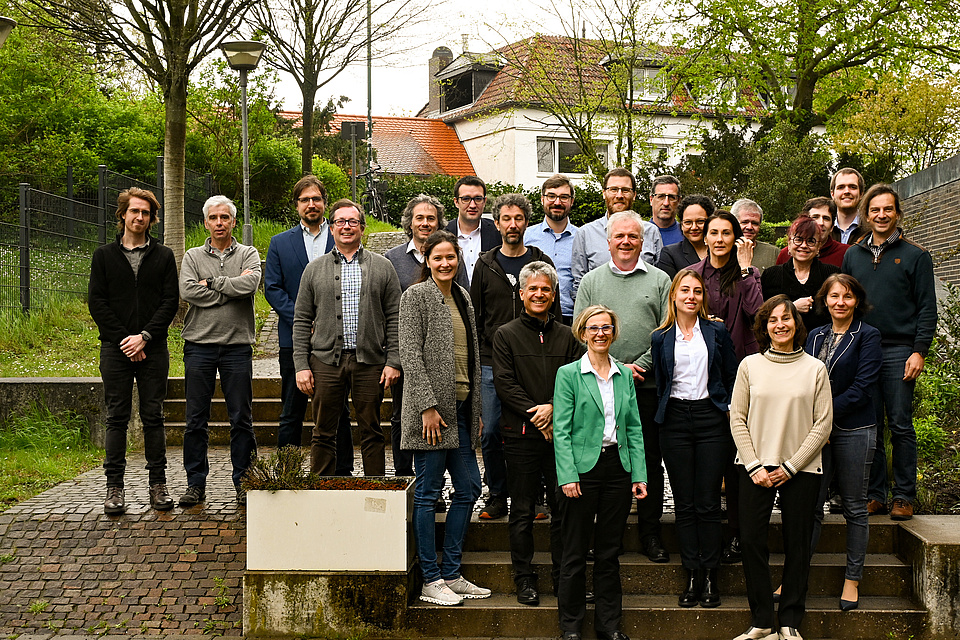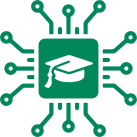Consortium Meeting at TU Darmstadt

The project partners of the GreenChips-EDU project met on April 4th at the TU Darmstadt campus for the first consortium meeting. The day was marked by focused discussions and brainstorming sessions aimed at aligning strategies and propelling the momentum of the project forward.
The overarching goal of the GreenChips-EDU project is to foster the number of students pursuing studies in electronics and to enhance the professional development of individuals working within the industry. By addressing the skills gap, the project aims to cultivate a skilled workforce and attract new talent to the field.
Some of the day's highlights were:
-
Plenary Session:
The day started with a plenary session during which the Work Package leaders provided an overview of the current status and progress of Work Packages 1-7. They highlighted the milestones achieved to date and outlined the key tasks that need to be accomplished by our next Consortium Meeting scheduled for the fall.
-
Collaboration with Unite! Alliance:
Following the plenary session, the consortium engaged in a video conference with representatives from the Unite! Alliance. The primary focus was on exploring opportunities to establish double degree agreements involving at least six university partners within our project framework. The insights and connections established during this session will guide the project’s efforts in the coming months towards realizing a double degree program for microelectronic masters.
-
Breakout Sessions:
The participants were then divided into 3 parallel breakout sessions:
1. Harmonization of Master Courses (Deliverable D2.1): This session centered on harmonizing existing Master Courses across the curricula of the partner universities.
2. Industry and Training Partnerships: The second session explored potential synergies with our industry and training partners.
3. Green Contributions in Microelectronics: In the third breakout session, partners agreed to collect best practices highlighting green contributions in the microelectronics industry.
-
Afternoon Sessions:
Post-lunch, the consortium divided into two groups for the last breakout sessions:
1. The first group focused on staff and student mobility, exploring ways to enhance mobility and exchange opportunities among partner universities. Interactive formats such as makerspaces, hackathons, repair cafes, group challenges for Bachelor students, and outreach events for high school students were discussed and agreed upon.
2. The second group concentrated on collecting Master modules that can be digitizing and establishing criteria for making these modules publicly available.
The day concluded with a sense of accomplishment, having covered a wide range of topics and initiated valuable discussions. As we move forward, the real work begins: translating these ideas and plans into actionable steps and tangible outcomes.

